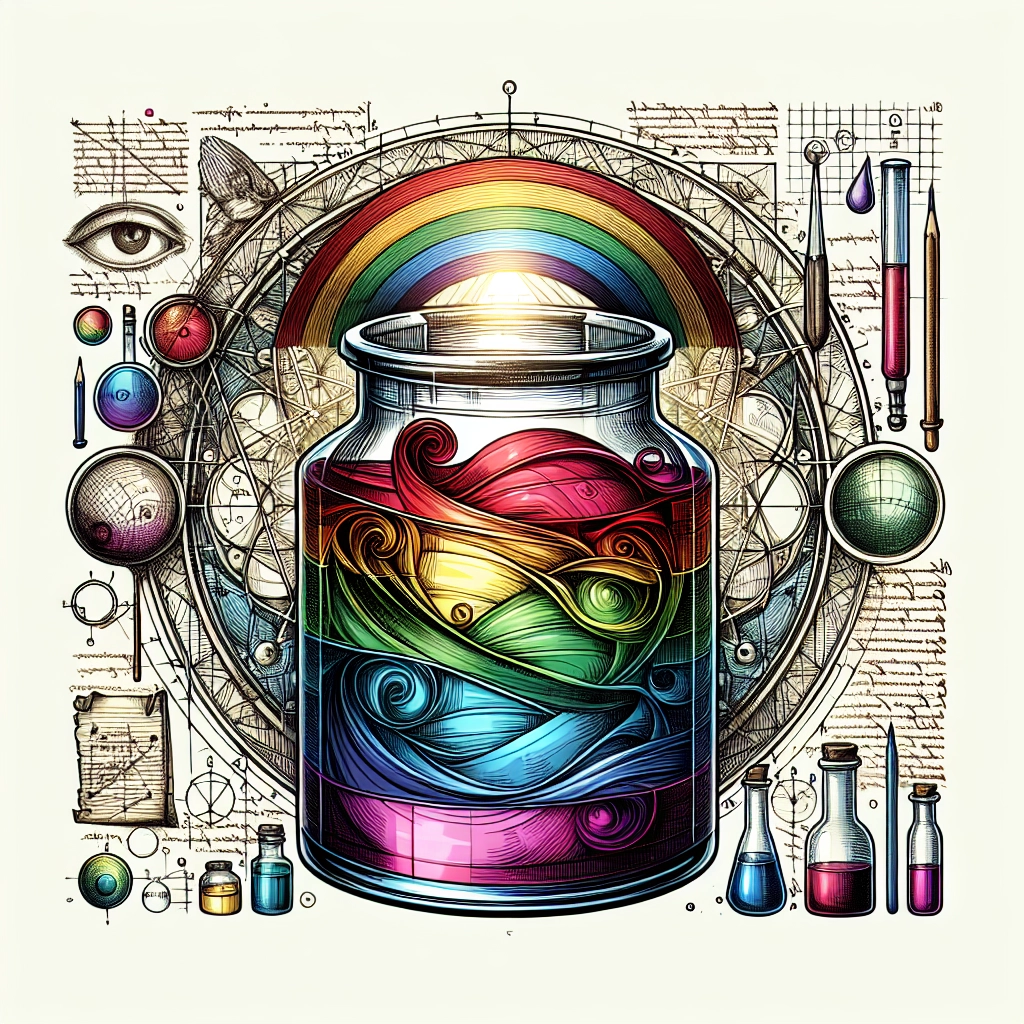
- Published on
- Authors

- Name
- ric de yuga 😄
🌈 Rainbow in a Jar: Exploring Liquid Density and Color 🌈
Creating a rainbow in a jar is a visually captivating science experiment that demonstrates the principles of liquid density and immiscibility. This experiment is perfect for engaging kids in hands-on learning and sparking their curiosity about physical science.
🔬 The Science Behind the Rainbow in a Jar 🔬
This experiment showcases how liquids of different densities can layer on top of each other without mixing. By carefully layering colored sugar water solutions with varying densities, you can create a beautiful, stratified rainbow in a jar.
🌟 Key Concepts:
- Density: The amount of mass per unit volume of a substance.
- Immiscibility: The inability of two substances to mix or blend together.
- Stratification: The layering of different substances based on their densities.
🧪 Materials Needed 🧪
- Various densities of sugar water solutions (more sugar makes the solution denser)
- Food coloring (different colors for each layer)
- A clear glass or jar
- Spoons or droppers for layering
📋 Detailed Steps to Create a Rainbow in a Jar 📋
Prepare the Sugar Solutions:
- Create sugar water solutions with varying densities by mixing different amounts of sugar with water. For example:
- 1st layer: 1 tablespoon of sugar in 1/4 cup of water
- 2nd layer: 2 tablespoons of sugar in 1/4 cup of water
- 3rd layer: 3 tablespoons of sugar in 1/4 cup of water
- 4th layer: 4 tablespoons of sugar in 1/4 cup of water
- Stir until the sugar is completely dissolved.
- Create sugar water solutions with varying densities by mixing different amounts of sugar with water. For example:
Add Color:
- Add a few drops of food coloring to each sugar solution to differentiate the layers. Use different colors for each layer to create a rainbow effect.
Layer the Solutions:
- Start with the densest solution (the one with the most sugar) and pour it into the jar.
- Carefully layer the next densest solution on top by slowly pouring it over the back of a spoon or using a dropper to avoid mixing the layers.
- Continue layering each subsequent solution in order of decreasing density.
Observe the Rainbow:
- Once all the layers are added, observe the stratification and the beautiful rainbow effect created by the different densities of the sugar solutions.
🎓 Teaching Kids About the Rainbow in a Jar 🎓
One-on-One Lesson:
- Introduction: Explain the concepts of density, immiscibility, and stratification. Discuss how different sugar concentrations create solutions of different densities.
- Hands-On Activity: Let the child help measure and mix the ingredients. Guide them through the steps, ensuring they understand each part of the process.
- Discussion: Ask questions to encourage thinking, such as "Why do you think the layers don’t mix?" or "What do you notice about the colors and layers?"
Classroom Activity:
- Group Discussion: Start with a brief explanation of density, immiscibility, and stratification. Show a video or perform a small-scale demonstration to capture interest.
- Group Experiment: Divide the class into small groups. Provide each group with the necessary materials to create their rainbow in a jar.
- Interactive Exploration: Allow the groups to perform the experiment and observe the layering. Encourage them to note the order and clarity of the layers.
- Sharing Observations: Have each group present their findings and discuss any variations in their results. Talk about the science behind what they observed.
🏆 Best Practices for Performing the Experiment 🏆
One-on-One:
- Engagement: Keep the child engaged by allowing them to handle and mix the ingredients. Encourage them to ask questions and make predictions.
- Safety: Ensure the child understands not to ingest any of the materials. Supervise closely and provide safety goggles if available.
Classroom Setting:
- Preparation: Prepare all materials in advance and ensure each group has a designated area to work. Lay down protective coverings to manage spills.
- Supervision: Monitor the groups to ensure they handle the materials safely and follow instructions.
- Clean-Up: Have a plan for clean-up, as the solutions can be sticky. Provide wipes or cloths for quick clean-ups and designate a disposal area for the used materials.
🌟 Conclusion 🌟
Creating a rainbow in a jar is a fantastic way to introduce kids to the concepts of liquid density and immiscibility. Whether you're working one-on-one or with a group, this experiment is sure to captivate and educate. It's a great opportunity to spark curiosity and excitement about physical science while providing a memorable hands-on learning experience.
Stay tuned for our next fun science experiment!
